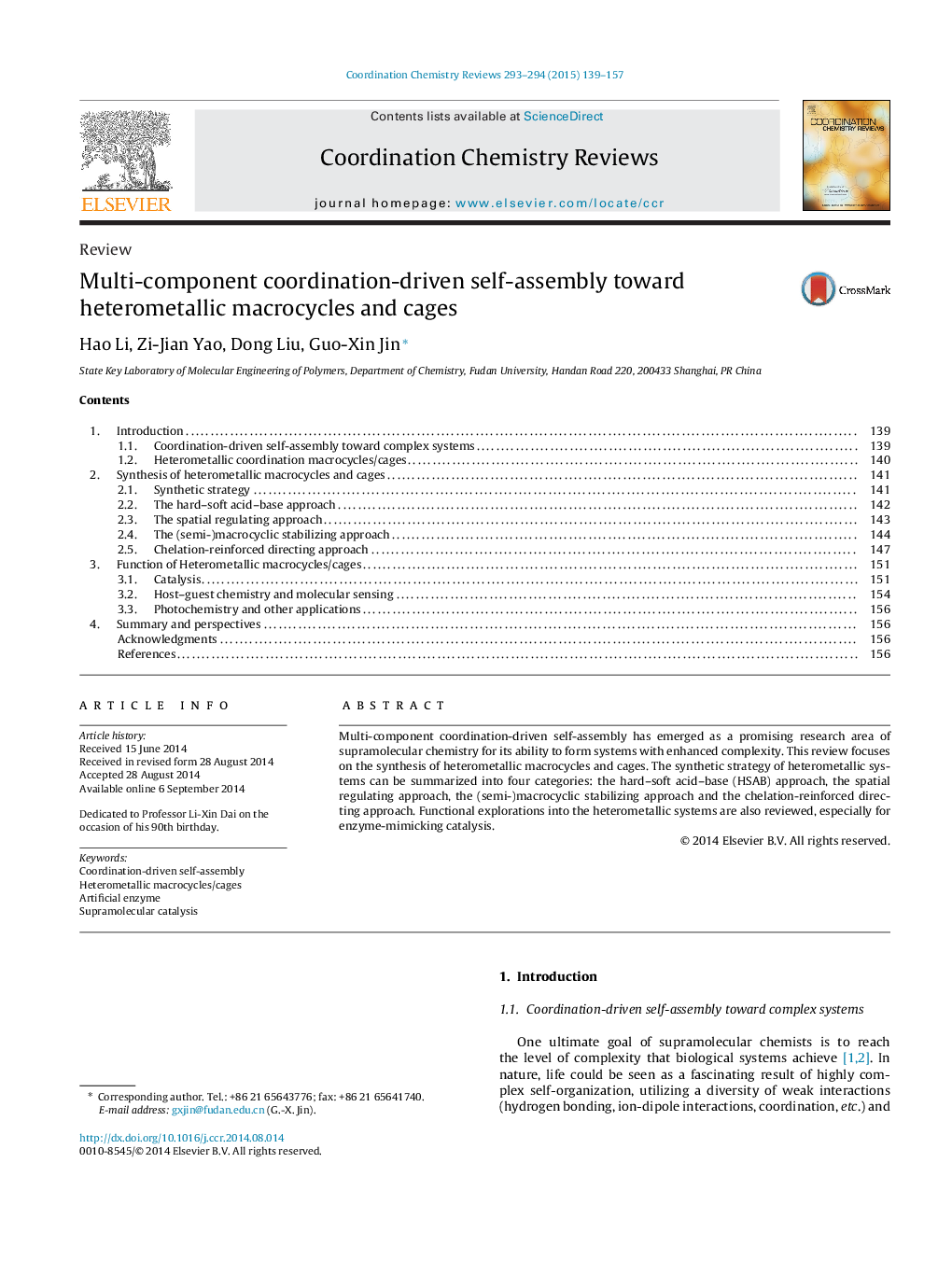| Article ID | Journal | Published Year | Pages | File Type |
|---|---|---|---|---|
| 1299363 | Coordination Chemistry Reviews | 2015 | 19 Pages |
•Focusing the emerging field of heterometallic coordination-driven assembly.•Synthetic strategy of heterometallic macrocycles/cages was discussed.•Effect of ligand designation to the formation of heterometallic structures.•Enzyme-mimicking catalysis by heterometallic macrocycles/cages.•Other functions such as anion recognition and luminescence properties.
Multi-component coordination-driven self-assembly has emerged as a promising research area of supramolecular chemistry for its ability to form systems with enhanced complexity. This review focuses on the synthesis of heterometallic macrocycles and cages. The synthetic strategy of heterometallic systems can be summarized into four categories: the hard–soft acid–base (HSAB) approach, the spatial regulating approach, the (semi-)macrocyclic stabilizing approach and the chelation-reinforced directing approach. Functional explorations into the heterometallic systems are also reviewed, especially for enzyme-mimicking catalysis.
Graphical abstractFigure optionsDownload full-size imageDownload high-quality image (241 K)Download as PowerPoint slide
